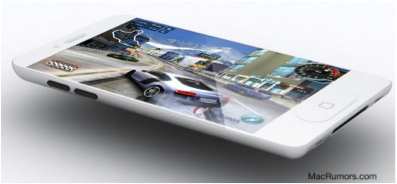The iPhone 5 and what we can expect
It seems as if speculation around the next Apple product never ends; the latest product subject to the active and momentous Apple rumor mill is the company’s next-generation iPhone, widely dubbed the “iPhone 5.” Though the company is less than six months into the product cycle of its latest official smartphone, numerous blogs have begun posting rumors of new features, be they a bigger screen, a faster processor, or 4G connectivity. That being said, there seems to be general cohesion around a few new iPhone features that will likely be big selling points of Apple’s next-generation device.
4G LTE Data Connectivity
Apple has so far remained above the 4G fray, refusing to introduce an LTE-capable smartphone that can compete with 4G Android and Windows Phone 7 devices. That’s largely because the company could not include LTE into its iPhones without sacrificing the legendarily long battery life for which they are well-known. However, the company recently released its latest iPad model and included (to no one’s surprise) a 4G chip capable of accessing 4G data services on both AT&T and Verizon. The iPad made no sacrifice in battery life when adopting this functionality, and it’s likely that Apple has found the secret to offering next-generation data with current-generation battery life. Expect this to be one of the major iPhone 5 selling points.
A Bigger, More Beautiful Screen
Cell phone reviews have hit the iPhone 4 and 4S models hard for maintaining a smaller, 3.5″ screen while their Android counterparts have almost universally moved to screens bigger than four inches diagonally. That’s likely to change with the next iPhone 5; many test models that have shown up in website analytics data have shown higher resolution screens (even with the existing Retina Display technology), which is a sure indicate that Apple is working on a slightly larger display that maintains the dense-pixel Retina technology it unveiled in 2010 with the original iPhone 4.
A New Form Factor for the iPhone 5
When the iPhone 4 was released, one of the biggest changes was the all-glass front and back construction of the phone that flew in the face of apple’s adherence to aluminum or plastic backing in previous generations. The device connected these glass front and back panels with a thin aluminum band that did double duty as the phone’s antenna. It was beautiful, striking, and unlike anything else on the market.

(Courtesy of http://www.ciccaresedesign.com)
It was also the subject of dipped call controversy and dropped phone heartbreak, as many an Apple user had to buy a replacement phone due to a cracked screen, a cracked back, or any number of other design flaws. That is likely to be changed with the iPhone 5; numerous reports have stated that the current all-glass enclosure has fallen out of favor among the industrial designers and marketing gurus that run the world’s most valuable technology company. In its place, most rumors are pointing to either a teardrop design or a standard brushed aluminum backing that would be far more durable when dropped and held for a call.
Near-Field Communication Technology
It’s something which has been present in Android models for quite some time, but Apple looks poised to bring it to the iPhone: near-field communication technology, or NFC. This technology, which cell phone reviews have dinged apple for not yet including with its device, would make it possible for iPhone users to simply wave their device over a payment terminal in order to pay for groceries, clothes, or anything else that can typically be put on plastic. It would also allow for communication and file transfer between other NFC-enabled devices, and even permit interaction between cars and the iPhone, or any other device with the technology built in. Think of NFC as a sort of Bluetooth on steroids.
When to Expect the New Device
Confirmation of these rumors can only be had when the actual iPhone 5 is unleashed upon the world. That looks to happen either at Apple’s annual WWDC event in the summer or during the fall. An early-autumn release would allow Apple to follow up the iPhone 4S release exactly one year later, and the company is typically fond of making its iPhone users wait at least one year before an update appears.
This is a guest article by Ruben Corbo, a writer for the website Cell Phone Expert where you can compare cell phone plans and check out cell phone reviews.

Live Comment
Your email address will not be published.